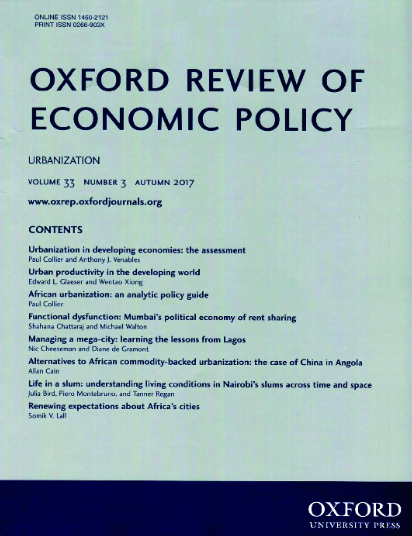绿色债券和碳排放
IF 1.8
2区 经济学
Q2 ECONOMICS
引用次数: 3
摘要
本文研究了绿色债券(即其收益承诺为绿色项目融资的债券)与碳排放总量之间的关系。利用美国各州的数据,我发现,人均发行1000美元的绿色债券,各州的排放量随后会下降0.9%至1.4%。我利用跨国数据得出了类似的降幅。这些结果对于经过独立第三方认证的绿色债券更为明显,表明认证是绿色债券市场的重要治理机制。本文章由计算机程序翻译,如有差异,请以英文原文为准。
Green bonds and carbon emissions
This paper examines the relationship between green bonds (that is, bonds whose proceeds are committed to financing green projects) and carbon emissions at the aggregate level. Using data for US states, I find that the issuance of $1,000 of green bonds per capita is associated with a subsequent decrease in state-level emissions by 0.9–1.4 per cent. I obtain similar magnitudes using cross-country data. These results are stronger for green bonds that are certified by independent third parties, suggesting that certification is an important governance mechanism in the green bond market.
求助全文
通过发布文献求助,成功后即可免费获取论文全文。
去求助
来源期刊

Oxford Review of Economic Policy
ECONOMICS-
CiteScore
12.50
自引率
1.50%
发文量
41
期刊介绍:
The Oxford Review of Economic Policy is a refereed journal which is published quarterly. Each issue concentrates on a current theme in economic policy, with a balance between macro- and microeconomics, and comprises an assessment and a number of articles. It gives a valuable appraisal of economic policies worldwide. While the analysis is challenging and at the forefront of current thinking, articles are presented in non-technical language to make them readily accessible to all readers. The Oxford Review is aimed at a wide audience including government, business and policy-makers, as well as academics and students. It is required reading for those who need to know where research is leading.
 求助内容:
求助内容: 应助结果提醒方式:
应助结果提醒方式:


